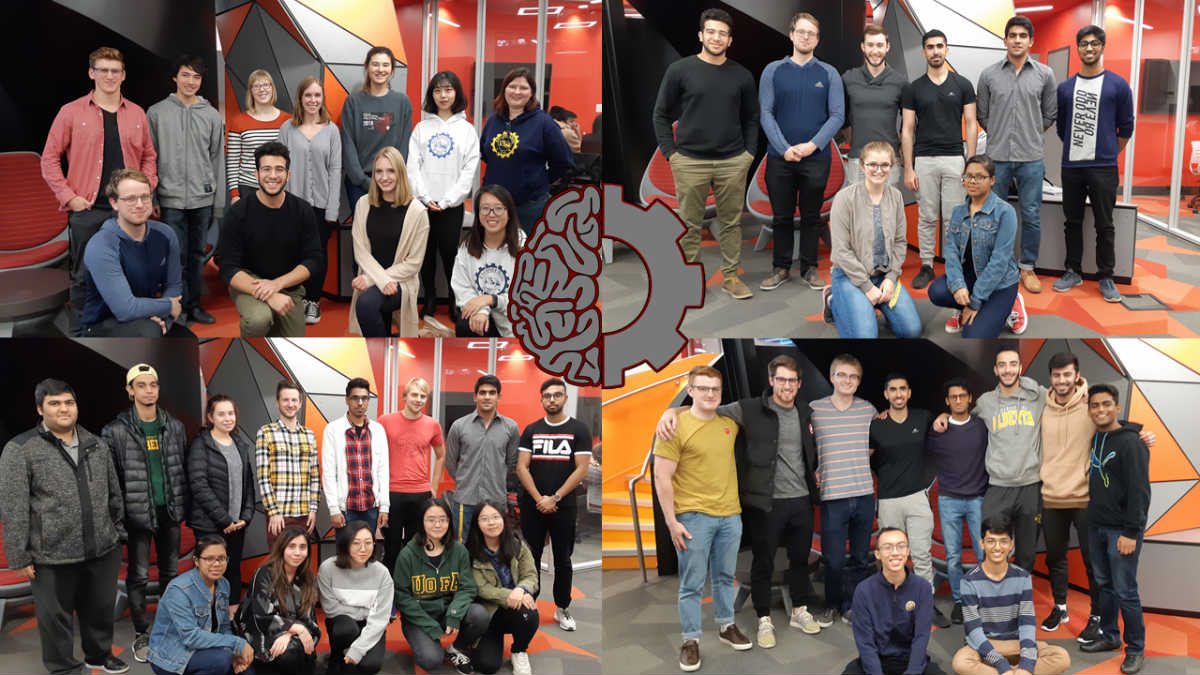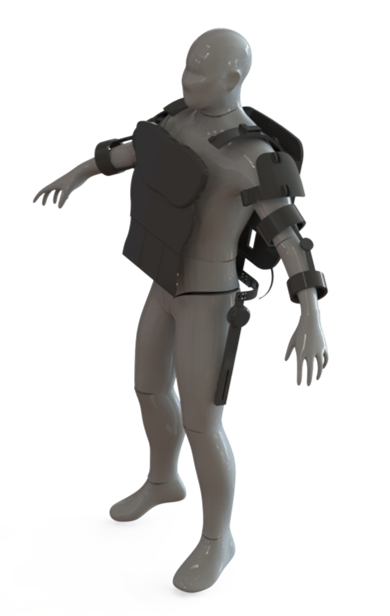
The University of Alberta Biomedical Technologies Development Group team. Formed in fall 2018, the group has quickly grown from a few inaugural members to a team of undergraduate students from all over campus, including the Faculty of Science. Photo credit: Ben Hallworth/UAB
A wearable, powered upper-body exoskeleton able to augment human strength, reduce likelihood of injury, and provide feedback to the wearer on proper posture and lifting technique. That's the current vision of student group UAB-the University of Alberta Biomedical Technologies Development Group.
"We're working to design an exoskeleton to reduce the risk of heavy lifting and repetitive strain injuries in the workplace," explained Clayton Molter, clinical team leader in the group and undergraduate student currently completing a minor in biological sciences. "The idea is to build an exoskeleton that a worker-say, at an assembly line job-who is completing the same task over and over again can strap into, providing joint support and powered load assistance."
Formed in fall 2018, the group has quickly grown from a few inaugural members to a team of undergraduate students from all over campus, including the Faculty of Science.
"Over the past year, we've really seemed to hit a nerve as we've grown to over 40 active members from computing science, engineering, neuroscience, kinesiology, and business," said Ben Hallworth, president and co-founder of the group and a student in mechanical biomedical engineering..
The group's hard work has been supported by the Student Innovation Centre since its formation, which has assisted with resources and faculty support as the group has grown into the large interdisciplinary team it is today.
Expertise at all levels
The undergraduate group is the latest to join existing expertise in the biomechanics field on campus, including the Bionic Limbs for Improved Natural Control (BLINC) Lab, Rehab Robotics Lab, and SMART Network.
"There are lots of amazing advancements being developed in the biotech and clinical sectors at the University of Alberta, and we wanted to give students at the undergraduate level a chance to explore this area as well," said Hallworth. "That's why we created UAB-to give students from all backgrounds real-world experience working at the cutting edge of biotech development."
Competition on the horizon
Eager to take that excitement and apply it to a real-world project, the team is hard at work on a small-scale prototype of their exoskeleton to submit to the Design by Biomedical Undergraduate Teams (DEBUT) Challenge.
"Our group is hoping to enter DEBUT with a working elbow prototype of our device," said Cierra Stiegelmar, studying neuroscience in the Faculty of Science and working as a research assistant at the BLINC Lab. "Following the competition, we plan to continue development throughout the next academic year to expand into a full upper-back and arm exoskeleton."
The team has also worked with Alberta Innovates through the Student Innovation Centre to pitch their project to local technology companies and engineering firms. With an engaged team of members and the support of faculty advisors across campus, the team is ready to take on the heavy lifting ahead to turn their project into a reality.
Want to learn more about the University of Alberta Biomedical Technologies Development Group, or find out how you can get involved? Check out the team's website for more information.
